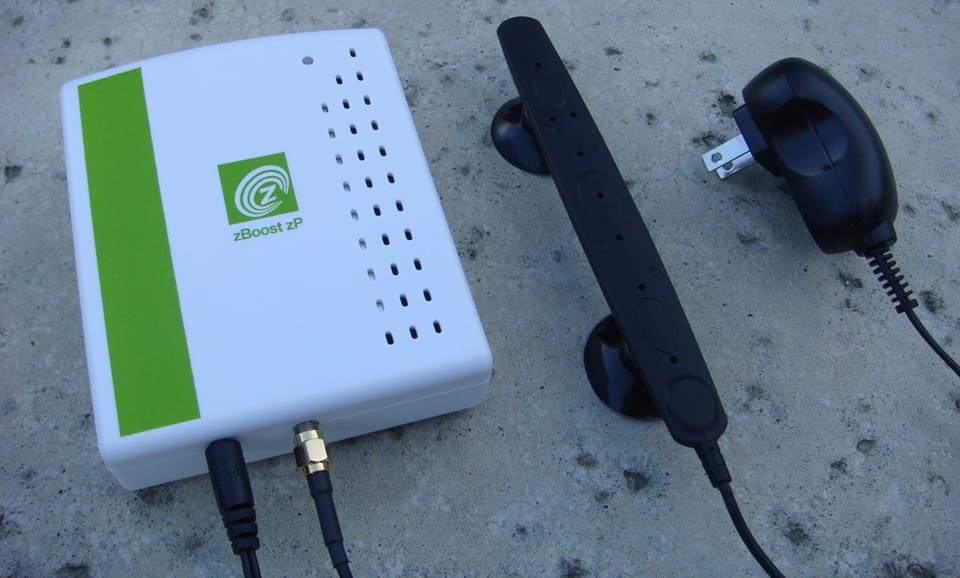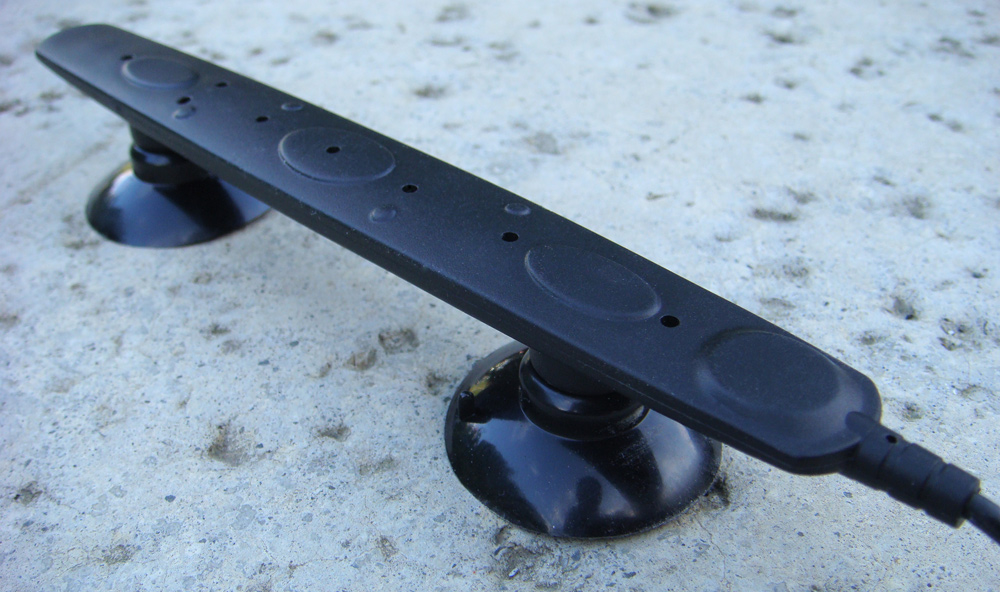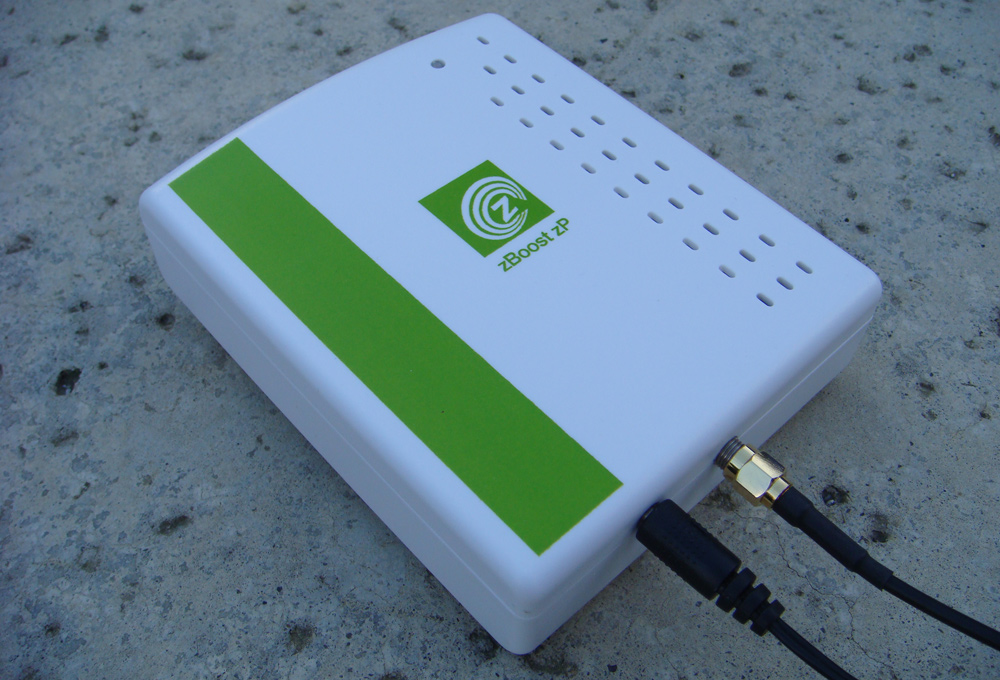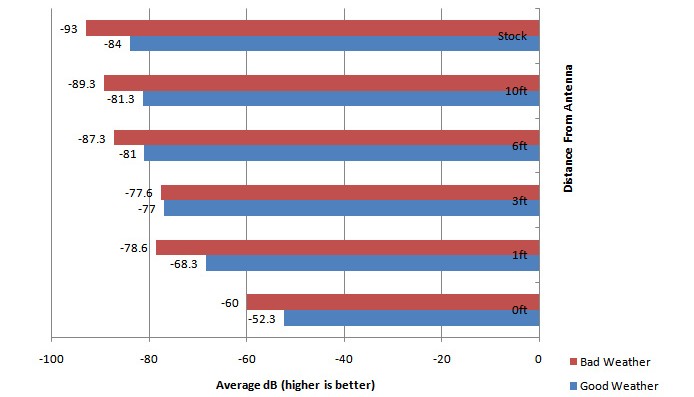Wi-Ex zBoost zPersonal YX300 (Review)

The cell phone is without a doubt one of the most revolutionary gadgets of the 20th century. It is now practically impossible for us to function without our mobile phones today. We use them to check our emails, make business calls, listen to music, check the time, and organize our schedules. Moving about, all of us know that our cell phone reception is spotty in some areas and buildings. I frequently have to move to the front or rear of my house just to make a clear call. It’s been unfortunate that up until now there haven’t been any solid solutions out there for this problem.
Wi-Ex is a company dedicated to wireless boosting technologies and has been around since 2002. We met up with Wi-Ex at the 2010 Consumer Electronics Show in Las Vegas where they talked to us about their zBoost line of cell phone amplifiers. Wi-Ex was kind enough to lend us their YX300 model, a “personal cell zone” unit meant for a single room or user space. Wi-Ex claims the YX300, “Increases indoor signal coverage for a single user up to 6 feet from antenna.”

Diving into the light green and white-themed packaging I found a Wi-Ex base unit, antenna, power adapter, and FCC certification sheet. I was surprised and a bit disappointed that there wasn’t a manual, although the installation instructions were printed on the packaging. The base unit is actually a signal receiving unit which measures 4in x 5in x 1.3in and is designed to mount onto a window or surface via the included suction cups. You can also mount the unit to a wall using screws where the suction cups would normally go. The antenna, which is where the signal amplification is output, sports a 20 foot cable and mounts via suction cups, but doesn’t offer screw mounting capability like the base unit. Each base unit also has a small status light that turns on once powered up. The light will be green if you’re good to go, and red if the antenna is too close to the base unit, or there’s something wrong. The first YX300 we received had a blinking red status light, which isn’t documented on the packaging or on Wi-Ex’s website. Wi-Ex’s technical support determined that the issue was our unit was bad and very quickly sent us a new one.

Installation of the YX300 was very simple and quick. First, you place the base unit in a window or somewhere where you get signal. Next, you connect the antenna and place it in a spot at least 10ft from the base unit to avoid interference. Finally, you plug in the power supply to get online. Our experience installing the YX300 went quicker than I had expected, but wasn’t completely faultless. I wasn’t able to receive any signal boosting at my desk since it sits next to the window where the base unit was mounted. It was inconvenient that the place I make most of my calls from was outside of the advertised 6ft boosting radius. Ideally you would place the antenna in the center of the room so that you get a full 12ft diameter of coverage. This however means leaving a wire running across your floor as well as needing something in the middle of the room to put the antenna on, both of which are unaesthetic and obtrusive.
The YX300 technical documentation on the packaging advertises up to 47dB of gain at the 1900MHz frequency and up to 43dB at 800MHz. I entered the diagnostic mode on my cell phone in order to test these claims. Once in my diagnostic menu I looked for the decibel (dB) rating for the signal my phone was receiving. I tested the YX300 with my personal LG Rumor cell phone on the Sprint network. One indirect feature of this signal booster is that it should improve the battery life on your phone. Since your phone doesn’t have to use more power to pick up signal it can significantly increase the amount of time between chargings. Testing was conducted in both sunny, clear weather as well as pouring and overcast weather. Multiple measurements were taken at ranging out to 10 feet from the antenna. Stock signal reception in the room was -84dB in good weather and -93dB in bad weather.

The YX300 gave a significant boost as advertised. The best gains were seen within 3 feet, yet there were still improvements out to 10 feet. The most gain we saw from the stock signal strength was 33dB. While this is significantly less than the advertised 47dB you’d have to be in an area with extremely little reception to see a gain that large. The gains that I did see equated to full bars on my phone. I was not the only one who noticed the boost; other people I was calling noticed that I sounded significantly clearer even past the 3ft marker. There have been news reports of cell boosters interfering with normal cell signals, but this was not observed during testing and the YX300 packaging even states that it will not cause interference.
Overall the YX300 impressed me with its capabilities. Of the cell phone boosters tested in the past, the Wi-Ex has been the first one to show concrete improvements with accurate marketing statements. Although the first unit I received was defective, the replacement unit worked flawlessly. Gains were noticeable up to the advertised 6 feet, and we saw improvement even up to 10 feet. The YX300 is targeted at single rooms such as offices or dorm rooms, and I think it works quite well in this regard. The YX300 is compatible with all US wireless carriers except iDEN, Nextel, and Wi-Fi. Currently, the YX300 is selling for about $59 on Amazon making it a great buy for the money. The ease of use, reliability, and concrete performance all add up to a solid product.
Links: Wi-Ex.com zBoost zPersonal YX300
Buy: YX300 for $59 on Amazon.com